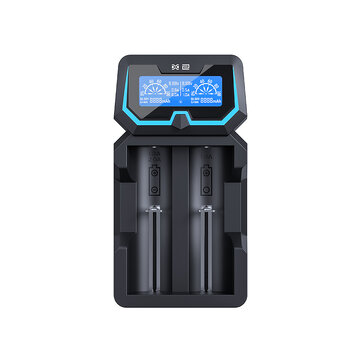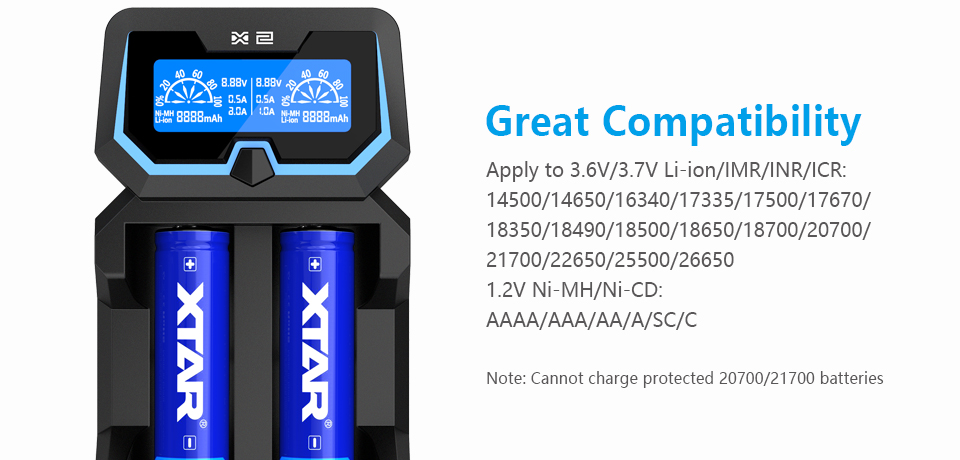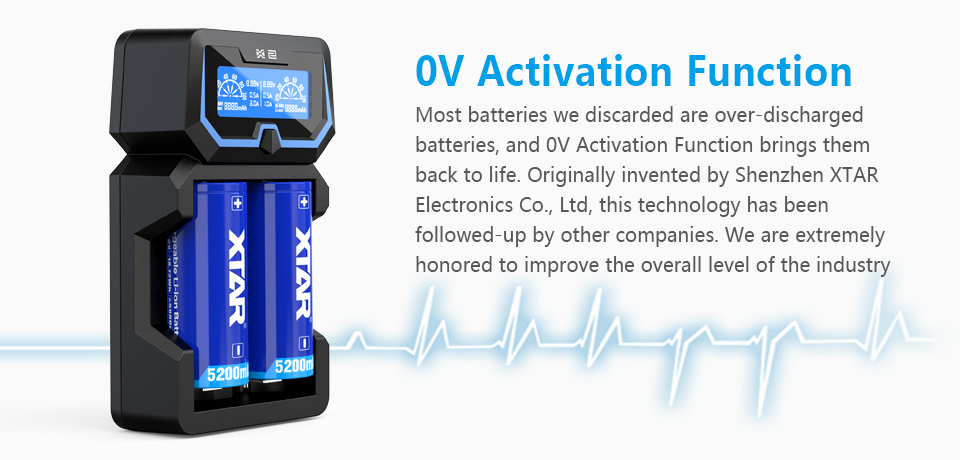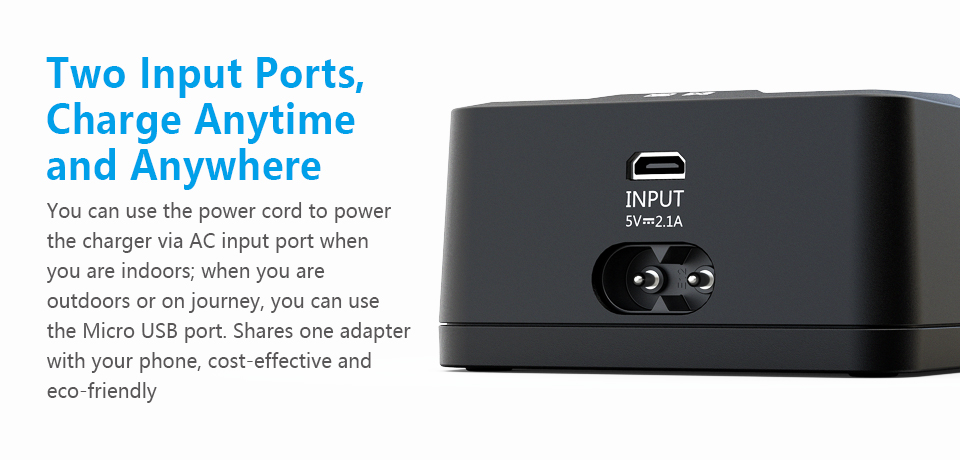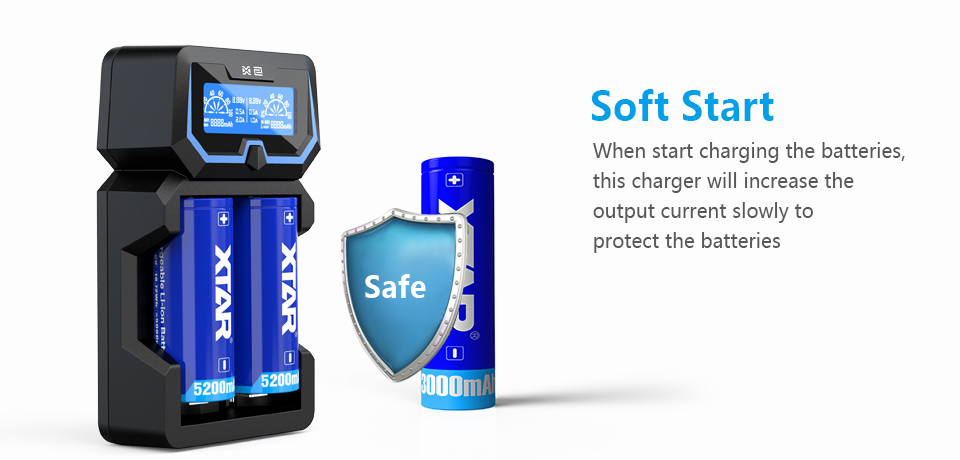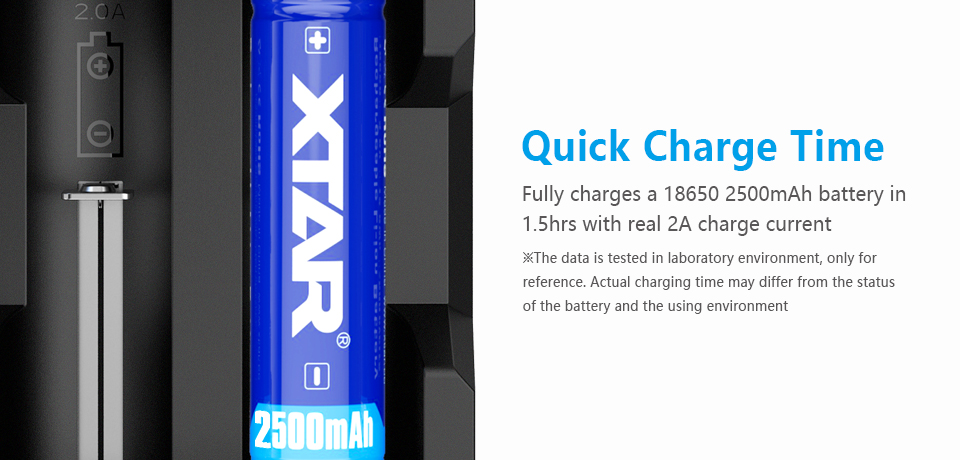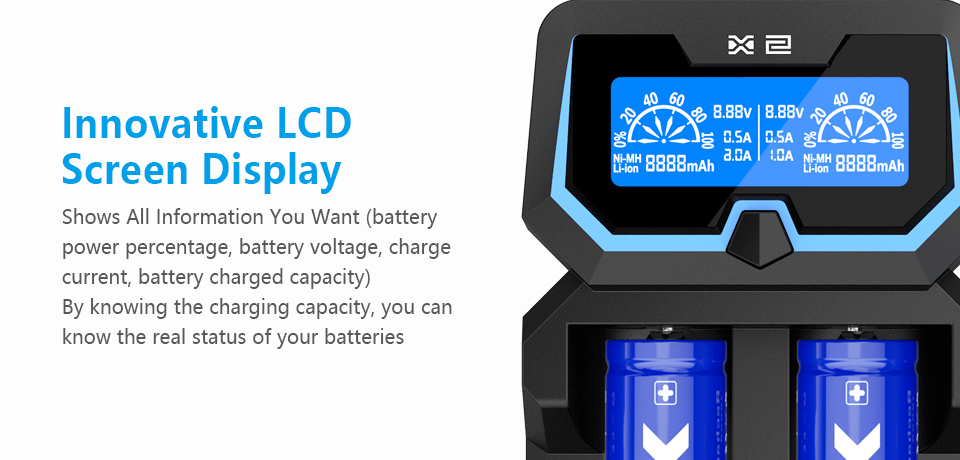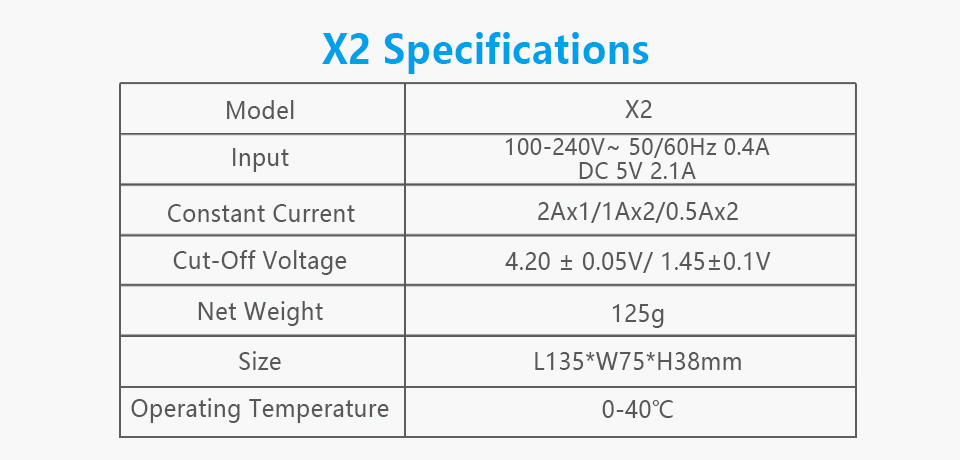Professional dual-Channel compact processor charger
Xtar X2
Li-Ion and Ni-MH batteries in 18650, AA, AAA and other sizes
• Charging of Ni-MH rechargeable batteries by CC method • Two independent charging channels • Three charging currents-1x 2A/2x 1A/ 2x 0.5 A (for Ni-MH and Li-ion cells up to 65mm long) • LCD display indicating charging capacity, cell voltage, charging current • Powered by any charger with a 2A USB socket and directly from the 230V network • Compact size-Easy to carry • Reactivation function of deeply discharged cells • Protection: Short-circuit, thermal, reverse polarity |
X2 is a professional processor loader with three-stage charging process TC/CC/CV and LCD display. It charges 1-2 Li-ion 3.6/3, 7V and Ni-MH cells with any capacity in the sizes AAA/R03, AA/R6, SUB-C/SC, R14/C, 14500, 14650, 16340, 17500, 17670, 18350, 18500, 18650, 18700, 20700, 21700, 22650, 25500, 26650.
The Xtar X2 backlit LCD display shows the charger's operating status in real time: Rechargeable batteries Expressed in mAh, battery voltage and charging current.
What Is THE TC/CC/CV charging method? It is a three-step process of loading Li-ion cells to keep the cell in good condition by charging the right current at each stage and completing the charging process at the right moment.
The various stages of the TC/CC/CV process are:
• TC phase: Cells discharged below 2, 9V are ' awake ' to lower currents.
• CC phase: When 2, 9V is reached, the cell is loaded with a constant current of 1x 2A/2x 1A/2x 0, 5A (depending on the quantity of the cells placed and their size).
• CV phase: When the cell is already nearly charged, the charger switches to a decreasing current charge until it reaches a voltage of 4, 2V on the cell. After reaching 4, 2V the charging process is complete-the battery is fully charged.
When left in the charger, the charged batteries will be subjected to a natural self-discharge process. Charging will resume when the battery voltage drops below 3.9 v.
The Xtar X2 has a function of reactivating deeply discharged cells and cells with a Voltage Of 0v. Many chargers on the market are not able to charge such batteries. Here with the help comes the charger Xtar X2, which in many cases allows you to ' resave ' such cells. Just insert a deeply discharged battery into the X2 charger, as with normal charging, the charger detects the unloaded link and attempts to reactivate it. Attention! Cells unloaded below a certain level are irreversible and reactivated may not be possible. Avoid too deep discharge of Li-ion batteries-this can lead to a significant reduction in their durability and capacity or to their total malfunction.
Complete with Xtar X2 charger We get a 2-pin network cable (so-called eights).
| Product data | |
| Manufacturer | Xtar |
| Charger Model | X2 |
| Supported Battery types | 1-2 Rechargeable Li-Ion 3.6 batteries-3, 7V, secured and unprotected 1-2 Rechargeable Ni-MH 1.2 v Batteries |
| Supported Battery Sizes | 14500, 14650, 16340, 17500.17670, 18350, 18500, 18650, 18700, 20700, 21700, 22650, 25500, 26650, AA/R6, AAA/R03, R14/C |
| Maximum battery length | 70mm |
| Charging method | Li-ion-processor-controlled TC/CC/CV NiMH-controlled processor CC |
| Charging Currents | 1x 2A/2x 1A/ 2x 0.5 A (for Ni-MH and Li-ion cells up to 65mm long) |
| End Voltage Charging for Li-ion cells |
4, 2V ± 0, 05V |
| Current of terminations | < 150mA |
| LCD Display functions | Current indications: Charging capacity, cell voltage and charging current |
| Additional functions | Reactivation of deeply discharged cells and cells 0V |
| Security | Thermal Short Circuit Before the battery is reversed |
| Input voltage and Input current |
5V 2100mA or from 100-240V 0, 4A |
| Power connector | Micro USB/2-pin (so-called eights) |
| Power supply included | Not |
| recommended power supply | 5V 2, 1A |
| Power Bank function | Not |
| Dimensions | 135 x 75 x 38mm |
| Weight | 125g |
| Kit contents | Charger 2-PIN network cable (octal), |
| Warranty | 24 months old |
